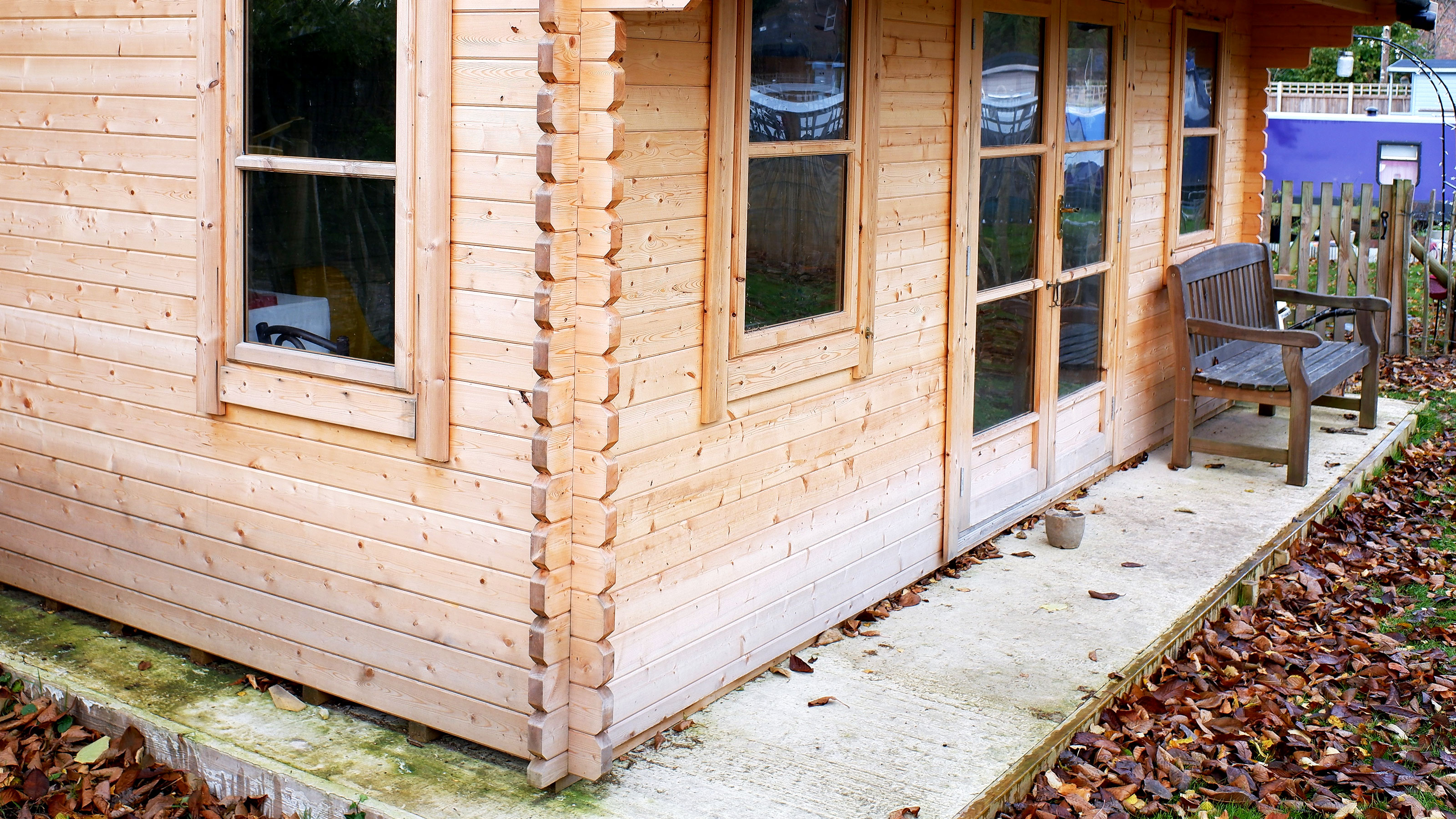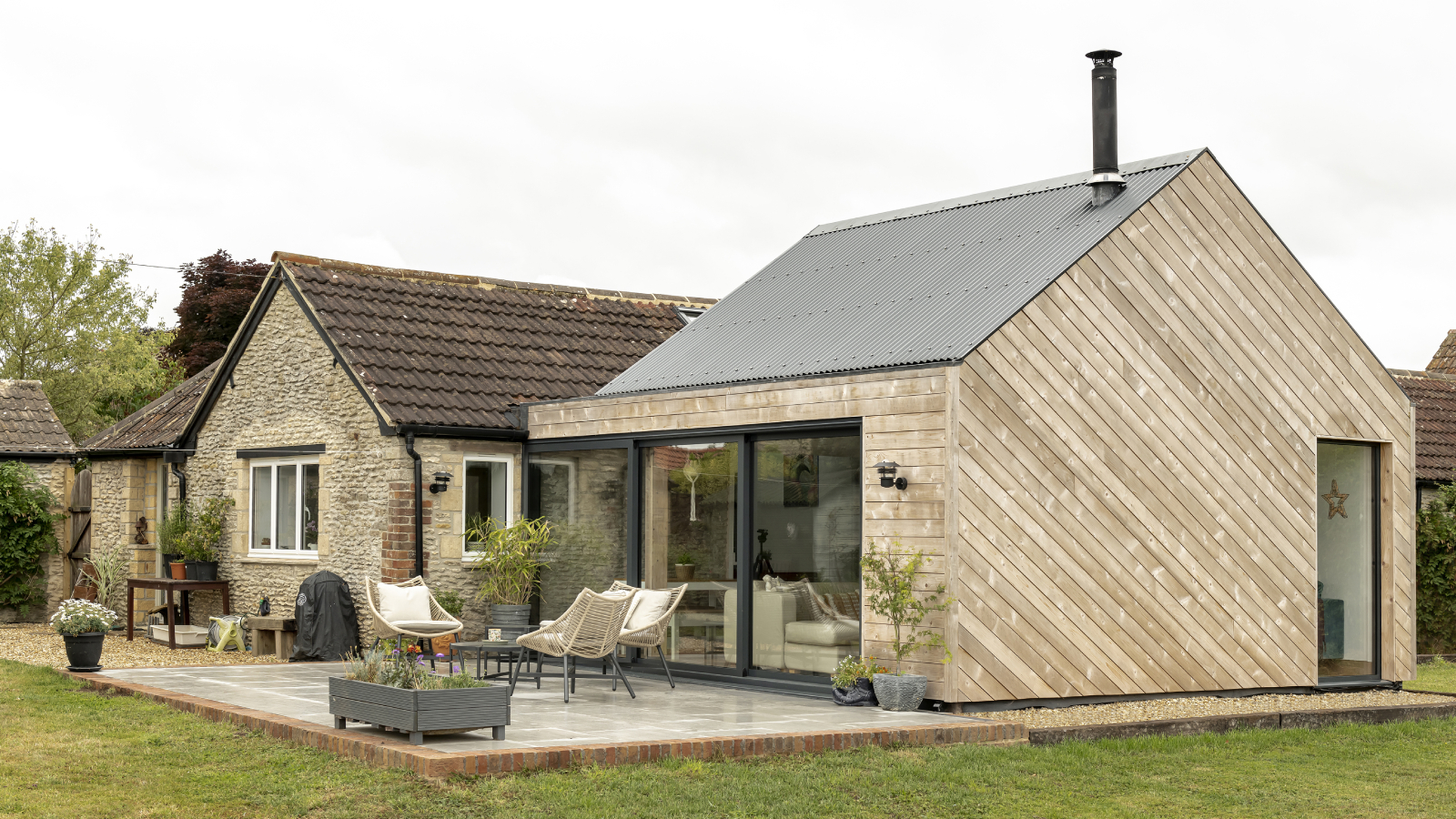How to build a shed base: A step-by-step guide
Got a new shed? Then you need to know how to build a shed base to make sure that it stays secure, level and stops the rain from rotting the floor

Discovering how to build a shed base will be one of the first things to think about when planning a new shed. A well-built shed base is key to ensuring that your shed is supported properly, helps stop water getting into the timber and prolongs the life of the shed.
It doesn’t matter whether you have a timber shed, metal shed or one of the best plastic sheds, it will need a base that is secure, flat and in the right location. Here we run you through how to choose the best base for your shed along with a step-by-step guide on how to build it.
How to build a shed base: Why it needs to be level
Whether you have an existing base or are installing a new shed base it is critical that it is level. “It is imperative to check your existing base is level and doesn’t deviate by any more than 15mm from edge to edge," adds Jenny Davis of shed supplier Forest Garden. "If this isn’t the case, the building will twist, causing gaps to appear in the sections and the roof, doors and windows to misalign.”
But how do you check that your shed base is level? Davis explains: “Place a straight edged piece of timber across the length of the base and place a spirit level on top of the timber near the centre. The bubble in the spirit level should sit comfortably within the two centre lines. Repeat the process across the width of the base.”
A step-by-step guide to building a shed base
There’s a few options for building a shed base. Here we tell you how to prepare your chosen area and how to build using the three common options: concrete, patio slabs and timber.
1. Choose a location
Whatever base you choose to use, you ideally need a flat, level surface on which to place. This means you need to prepare the area where you have chosen to place your shed. Try to choose an area that is relatively flat – otherwise you’ll need to dig out the area – and keep away from foliage to help stop water getting into the base.
2. Prepare the ground
Measure and mark the ground with pegs and string where you are going to place the shed, not forgetting to leave at least six inches extra all round. Now you will need to dig out any turf, soil and rubble with a spade and move out of the way with a wheelbarrow. Make sure the dugout ground is level by placing a long piece of timber across the ground and checking with a spirit level.
Bring your dream home to life with expert advice, how to guides and design inspiration. Sign up for our newsletter and get two free tickets to a Homebuilding & Renovating Show near you.
3. Laying the base – concrete
A concrete base will need crushed hard-core as its foundation. Typically, you will need to dig down around six inches. To keep the concrete in place you will need to build a timber frame. You can use any timber you have lying around. Cut the timber to the right size i.e. 6 foot x 4 foot plus six inches and arrange in a rectangle.
Measure diagonally from corner to corner i.e. top left to bottom right and top right to bottom left. If both measurements are the same it's straight. Use another length of timer in the middle on the shortest side to brace the frame. Secure by screwing the timber together or using metal L-shaped brackets. Finally, put the frame in place and use a spirit level to make sure it's level.
Now add a three inch layer of the sub base like Tarmac MOT Subbase from B&Q and compact it using a tamper like this Roughneck Contractor's Tamper from Amazon. Finally mix up the concrete in batches and add to the frame. Think about hiring a cement mixer as it's hard work mixing a lot of cement by hand.
Roughly spread out the cement with the back of a spade. Finish by getting a length of timber that reaches across the frame. Place at one end and using a back and forth motion, slowly level out the cement.
4. Laying the base – patio slabs
Laying a patio follows a similar path to laying concrete. You need to add a sub base, followed by adding sand and cement and making sure this is level before you lay down any paving slabs or stones. Follow our how to lay a patio post for an in-depth guide.
5. Laying the base – timber
There’s two options here: timber bearers or a timber frame. Timber bearers are as simple as it gets. You need lengths of timber the same length as the short side of the shed. Place them two feet apart on level ground and place the shed on top. You might want to lay them on a waterproof membrane for better protection.
The other option is to build a timber frame using 2” x 2” wood cut to length to match your shed size. Create the outer frame and then insert timbers inside roughly every two feet to strengthen the frame. Again place on a flat level surface with a waterproof membrane. Alternatively, buy a ready made base like the Forest Garden 6x4 Timber Shed base from B&Q.
What is the best base for a shed?
A solid level base is the key for a shed base and there are a few options suitable for the job, each with their pros and cons. A raised concrete base is a popular choice as this gives a sturdy, level, waterproof and solid platform to place the shed on. It is a good choice for larger sheds that will contain a lot of heavy objects, but not the best choice for sloping ground.
Patio slabs provide a solid base for small and medium sheds. They are relatively inexpensive and laying a patio is well within the capabilities of any competent DIYer. Another relatively inexpensive – and quick – option is pressure treated timber bearers. But these will need to be placed on level flat ground. Or you can use timber to build a frame. You can add metal feet to the frame to lift off the ground or place on blocks.
A quick alternative is plastic shed base panels. These typically interlock so you can build whatever size you need very quickly, but they need to be placed on flat prepared ground to work effectively.
How do you prepare ground for a shed base?
This can vary depending on what type of base you are using for your shed, but as a general rule you need to clear and level the area you are going to use before you start. You will need to mark out the area where the shed is going to go with pegs and strings to get straight lines. Add an extra foot on all sides. So if your shed is seven feet x five feet, mark out an area eight feet x six feet.
Typically you will need to dig down around 3- 6 inches depending on what type of base is being laid. You may need to dig down further at one end if the ground is uneven. If you’re placing your shed near a fence make sure there is at least a two foot gap. This allows you to get behind the shed if needed.
What is the cheapest way to lay a shed base?
Using concrete blocks is one of the cheapest ways to lay a shed base, especially if you have a small or medium sized shed. Concrete blocks are inexpensive and you will only need around 6-12 for a small shed. Add sand and cement – to hold blocks in place – and you might only have to spend around £30-£40.
To add extra waterproof protection, introduce a damp proof course like the Bond-It Damp Proof Course Membrane on Amazon on top of the blocks to stop water reaching the shed base from below.
Another option is to use wooden pallets, these are effective for lifting a shed off the ground, to stop water ingress, but need to be secured in place. They are cheap and if you do a bit of scouting around online (such as Facebook Marketplace) you can get them for free.
Steve Jenkins is a freelance content creator with over two decades of experience working in digital and print and was previously the DIY content editor for Homebuilding & Renovating.
He is a keen DIYer with over 20 years of experience in transforming and renovating the many homes he has lived in. He specialises in painting and decorating, but has a wide range of skills gleaned from working in the building trade for around 10 years and spending time at night school learning how to plaster and plumb.
He has fitted kitchens, tiled bathrooms and kitchens, laid many floors, built partition walls, plastered walls, plumbed in bathrooms, worked on loft conversions and much more. And when he's not sure how to tackle a DIY project he has a wide network of friends – including plumbers, gas engineers, tilers, carpenters, painters and decorators, electricians and builders – in the trade to call upon.

